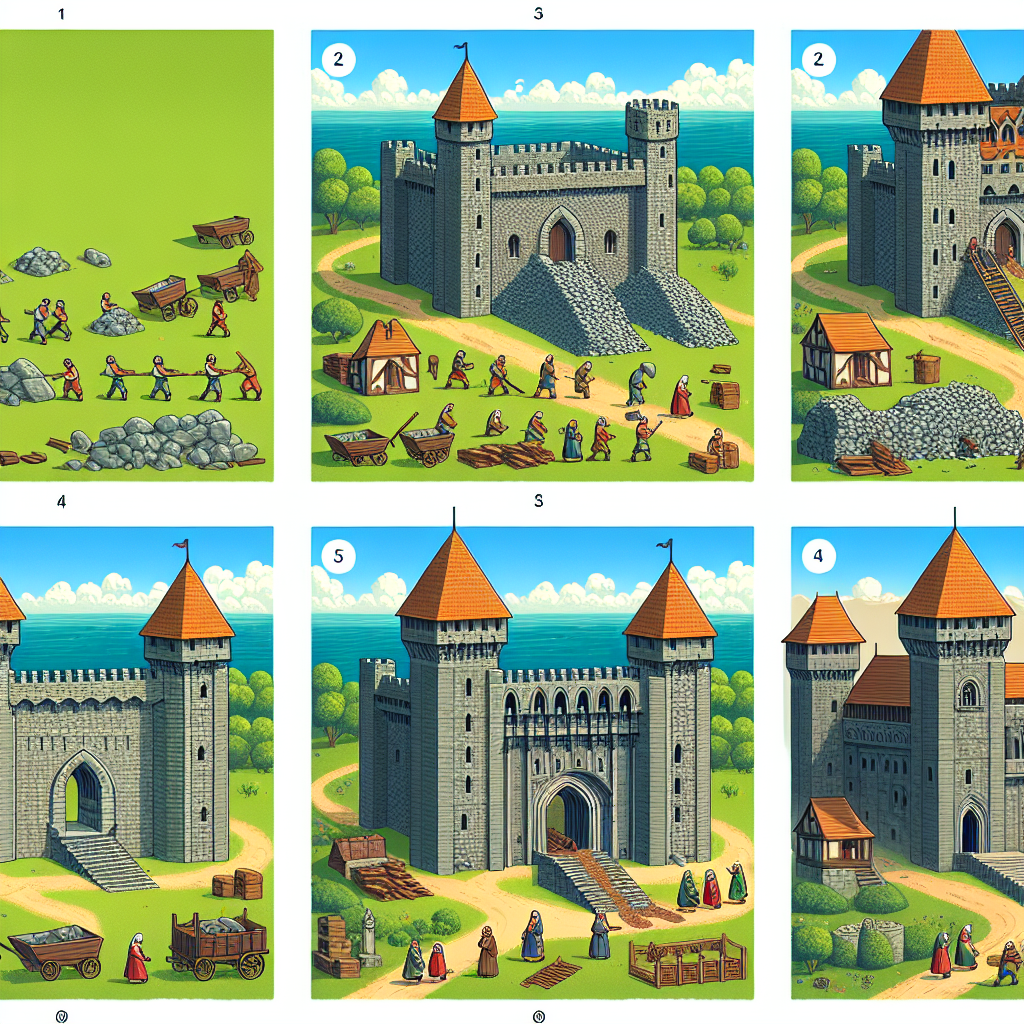
How to build a castle
Introduction to Castle Building
Building a castle is no small feat, and while it may not be as common today, the allure of these medieval structures still captures our imagination. From their grand towers to their fortified walls, castles convey a sense of history, power, and resilience. Whether you're an architecture enthusiast, a history buff, or someone simply curious about the art of castle construction, this article will guide you through the essential aspects of **building a castle** in a modern context.
Historical Significance of Castles
Understanding the historical importance of castles provides invaluable insight into their construction. Castles served multiple purposes: they were residential fortresses, military strongholds, and symbols of feudal power. Here are a few key points:
- Defense: Castles were primarily built for protection against invasions.
- Authority: They represented the power of the nobility and their control over territory.
- Habitation: Castles were homes to nobility and their families.
- Administration: They served as centers for local governance and justice.
Modern Relevance of Castles
Today, castles are more than just relics of the past. They attract tourists, inspire architects, and serve as event venues. Building a modern castle, whether for personal use or as a tourism venture, offers an opportunity to blend history with contemporary design practices. Here’s how to approach this ambitious project:
Planning Your Castle
The first step in any construction project is meticulous planning. This phase involves determining your goals, budget, and design preferences. Here are steps to consider:
- Define Purpose: Are you building for private use, tourism, or another purpose?
- Set a Budget: Establish how much you can invest in the project.
- Choose a Location: Select a site based on accessibility, landscape, and historical significance.
- Consult with Experts: Engage architects and historians for advice on design and features.
Design Elements of a Castle
A successful castle design incorporates various elements that reflect historical styles while meeting modern needs. Here are essential features:
- Moat: Consider adding water features for authenticity and aesthetics.
- Walls: Thick stone walls provide protection and insulation.
- Towers: Include lookout towers for panoramic views and defensive purposes.
- Gatehouse: This entrance should be imposing and functional.
- Courtyard: An open space at the heart of the castle can be used for gatherings.
Materials and Techniques
Choosing the right materials is crucial for durability and authenticity. Here are some suggestions:
- Stone: Traditional castles were built with local stone; consider granite or limestone for your castle.
- Brick: While less common, bricks can provide a unique aesthetic and are suitable for modern builds.
- Wood: Use reclaimed wood for structural elements or interior finishes.
- Metal: Iron can be used for fixtures and security elements.
Constructing Your Castle
Once planning and design are complete, it’s time to start construction. Building a castle involves various steps and a team of skilled professionals:
The Construction Process
- Foundation: Begin with a solid foundation, ensuring stability for the castle.
- Walls and Towers: Erect the main structure using your chosen materials.
- Roofing: Choose a roof style that complements the castle’s historical aspect.
- Interior Features: Install amenities that blend modern comfort with classic style.
- Landscaping: Surround the castle with gardens and paths to enhance its beauty.
Sustainability in Castle Building
As we move toward a more sustainable future, modern castle builders must consider environmentally friendly practices. Here are some ways to incorporate sustainability:
- Energy Efficiency: Install solar panels discreetly to blend with traditional architecture.
- Water Conservation: Implement rainwater harvesting systems.
- Local Sourcing: Use materials sourced from the local area to reduce transportation emissions.
- Permaculture Gardens: Create gardens that support local biodiversity and provide sustenance.
Preserving Your Castle
Once your castle is constructed, maintaining its grandeur requires ongoing effort. Regular maintenance will not only enhance durability but also preserve historical significance:
- Regular Inspections: Check for structural integrity and resolve issues promptly.
- Restoration Work: Use expert restorers to preserve historical architecture.
- Community Engagement: Involve local communities and tourists to spread awareness and appreciation.
- Historical Education: Promote workshops and tours to educate visitors about the castle's history.
Conclusion: A Castle for the Ages
Building a castle is an ambitious but rewarding endeavor, blending historical reverence with modern innovation. Though the process is extensive, the end result—a stunning structure steeped in history and majesty—presents an opportunity to connect with our past. As you embark on your journey, remember that the essence of castle construction is not merely in the stones and walls, but in the legacy they will leave behind. By understanding **how to build a castle**, you are not just creating a home; you are forging a link between history and future generations.
By Guest, Published on September 28th, 2024